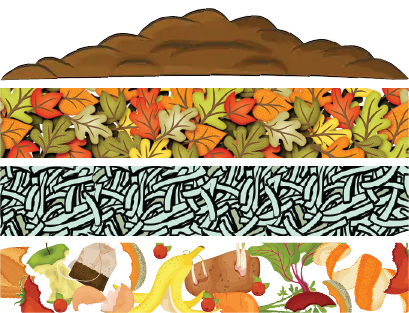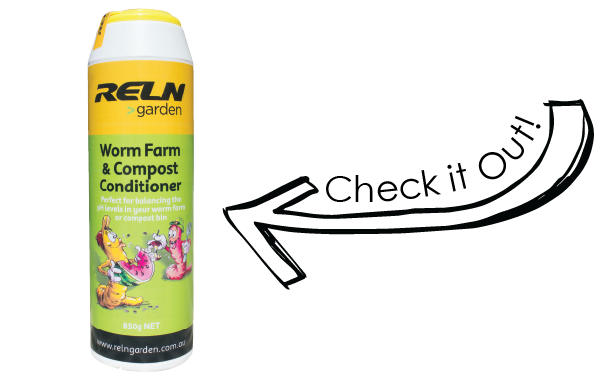I have almost no knowledge on composting, just the very, very basics. This blog is my experience and research that I found while also running a little experiment on the compostability of the Envirochoice products.
For those of you who don’t know, compost is organic material breaking down and being turned into soil. There are different types and methods of composting. The organic content for each varies. The outcome is great nutrient rich soil which creates a circular economy.
There are three main kinds of compost:
Aerobic: This is where air needs to be in the compost to then break down the organic materials. You need to turn the compost every few days to circulate the air inside it and make sure it has a healthy amount of moisture in it. You need to keep a decent amount of air space in the composter so then it’s easy to turn and also remains healthy with the moisture and oxygen. This is where the tumbler style composter comes in handy (which is the one we have!)
Anaerobic: As you have probably guessed, this is compost with no oxygen present. This compost takes barely any effort to maintain. You just chuck all your compost, food scraps and organic waste into the composter and leave it for a year or more. Because there is no oxygen, this creates an environment where the bacteria takes over and makes a nasty stinky odour (hold your nose!). A perfect example of an anaerobic environment is a landfill. There is almost no oxygen in a landfill which creates the smell and also creates methane gas, which is damaging to the environment.
Vermicompost: This type of compost uses worms, moisture and oxygen to break down organic material. The worms do most of the work but the bacteria does help too! There’s not a huge amount of effort in taking care of a vermicomposter, it doesn’t get too smelly, produces none to very limited amount of bad bacteria and requires a little amount of time per week to maintain.
2. Home Vs Industrial
Home composting is where you dispose of food, fruit and veg scraps, grass clippings, home compostable products and leaves to produce a nutrient rich soil. The composting occurs over a few months. The composting process is not exact and is not suitable for industrial compostable items as the conditions, temperature, moisture etc. is not regulated. There are limitations to home composting, for example, meats and bones cannot go in home compost. It either won’t break down or it will attract vermin.
Industrial composting is a large scale process that is heavily monitored by professionals. This compost has fewer restrictions as to what is allowed to go in it. This compost type will be able to compost bioplastics, and a larger amount of products & organics, where home compost will not. Industrial composters have the ability to shred materials down to the same size, can adjust and monitor the temperature, oxygen levels, and the quality of the compost.
3. Making our Compost
We bought a big 245 litre tumbler compost from good ol’ Bunnings and we began our aerobic compost journey. This is what we started with to create our compost lasagna!
1. Start with a small amount of existing compost & starter block (compressed coconut fibre)
2. Add dry leaves
3. Add shredded paper
4. Add food scraps
Once the base was made and had settled in, we continuously added food scraps and some compostable plates and cups. We used compost conditioner occasionally to just keep things healthy and balanced.

4. Composting Our Packaging
Our products are certified for industrial composters but we believe that they are suitable for a home composter! We did our very own home testing, and we are very happy with our results. Some products suited the home composter and others clearly belong in an industrial composter.
We tested our products for 12 weeks and had regular updates ever four weeks! We can go on and on about our test and its results, why bother talk about it but instead we would rather show you!
5. Compost Certifications
Australian Compost Certification
The ABA is the Australasian Bioplastics Association. The ABA has been a leader in the Australian and New Zealand bioplastics industry. The ABA has two logo’s which identify if a material is suitable for a home or industrial compost system. This standard is only recognised in Australia and New Zealand, and it is not a common certification to hold. Most manufacturers will only test compostability to international or European standards, as they are much bigger markets in respect to AU/NZ which is quite small. Find out more here:
International Compost Certification
Whilst it is great to have this strict control, consider that many products are certified to International or European standards over Australian ones due to the size markets they will be sold to. If you’d like to read more about the most popular International or European Standards, which most of our products are certified to, you can read about them here:
6. Paper can compost, right?
Something that isn’t outlined anywhere but is generally common or assumed knowledge; paper is compostable! It can be shredded, like in our compost lasagna, or can be a napkin or a plate. The tricky thing to remember is you have to be mindful of glue, inks and lining types (It can be harmful to the compost and these components won’t break down).